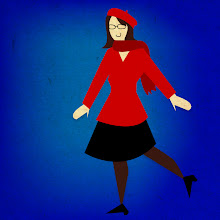Tags, writings over walls and posters, pamphlets and stencils have always been the natural way of expression of outsiders, of social misfits, all those unwilling to comply with or to fully accept the way society is.
Unsurprisingly, advertising is a prime enemy for all of those who do not recognize themselves in the self-righteous, all encompassing consumption society. I won't delve into the arguments for or against advertising (or worst, for or against the consumption society). This is not the focus of this post, and as it is a debate that has been around for a while by now, I trust you know the drill and the basics arguments. Also, writing down only a fifth of it would take way too much time.
So, long story short : anti-consumerist don't like advertising, and they let us know, often by defacing billboards or spoofing commercials.
As an advertiser I cannot be unaware of the hostile reaction created by advertising or of the growing ad creep. And as a graphic designer, I always have an eye out for the vernacular street language, the odd stencil or the clever rewriting of a tagline… which is why I was so interested when I stumbled upon those posters in an underground station last week :
They were an odd mixt of aphorisms, anarchist slogan, anti-advertising and hippie motto. When I first saw those, my first reaction was "awesome !", and the second "wait, isn't it a cleverly hidden advertising stunt, designed to look like street art / ad busting ?"
Which show that really, I'm a) far to young to be this jaded, b) healthily suspicious (it's not paranoia if they're out to get you) or c) perfectly lucid.
But the next day the "posters" were gone, the corridor were back to the same old boring posters about christmas sales (yep, already) or video games, or both, and it looked like my first reaction had been accurate after all.
A few sweep of the online publiphobes (as we call adbusters in French) haunts show that a similar bust occurred a few month ago, obviously from the same people (I would almost call them artists, really.)
I can't help but feel that this kind of busts are ultimately futile, but in the meantime they are a small... well, rectangle of purity in a sea of venality i guess.
